Agency life moves fast—and clients don’t wait. Global spending on SEO software is projected to reach USD 84.94 billion in 2025, intensifying the race for results. When you need full-service SEO but lack an in-house crew, SEO reseller software lets you badge a partner’s tools and talent as your own. With the right platform, you stay front-and-center while specialists handle audits, content, and link building behind the curtain. This guide unpacks six must-have features and rates top providers so you can choose with confidence.
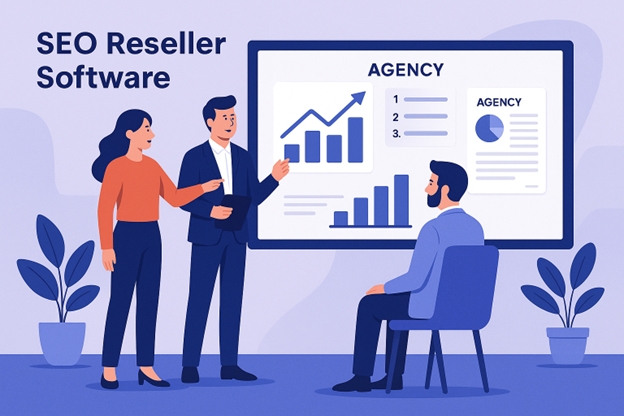
1. White-label and branding capabilities
According to a Demand Metric/Lucidpress survey reported by Inc., companies presenting their brand uniformly across every channel see an average 23 percent lift in revenue.
That upside disappears the moment a client glimpses a vendor logo. Your reseller platform must let you repaint every surface with your identity: custom domain, color palette, login screen, email “from” address, and even the tiny footer on a PDF report. If any element stays off-brand, trust erodes. Platforms purpose-built for white-labeling, such as SEO reseller software like AgencyPlatform, help agencies host dashboards on their own sub-domain, add unlimited client logins, and send notifications from a branded inbox without exposing the provider’s name.
AgencyPlatform sets a useful benchmark. Agencies can host the dashboard on their own sub-domain, add unlimited staff and client logins, and trigger notifications from a branded inbox—all without exposing the provider’s name. To the client, it feels like software you coded in-house.
Before committing, run a five-minute branding audit:
- Swap in your logo.
- Export a test report.
- Log in as a client and hunt for stray vendor labels.
If you still spot the supplier—or the customization menu forces clunky work-arounds—keep looking. When every touchpoint echoes your brand, clients credit you for the wins and happily renew.
2. Comprehensive reporting and analytics
According to Supermetrics, 56 percent of marketers say they don’t have time to analyze the data they already collect. Your reseller software must lighten that load—pulling metrics from Google Analytics, Search Console, ad platforms, and CRM logs, then converting them into plain-English insights.
In Gartner’s 2024 survey, 43 percent of marketing leaders said their reporting needs are met through automated dashboards “frequently or almost always.” If a client spots a traffic dip on Tuesday, they should see the rebound by Wednesday without waiting for the next PDF packet.
Prioritize platforms that:
- Surface deltas, not just snapshots (e.g., “organic leads up 18 percent since your blog overhaul”).
- Tag every chart with an insight sentence so you’re not rewriting the story in email.
- Render cleanly on a phone—because most owners check numbers between meetings.
Run a simple stress test: disconnect Wi-Fi and open the mobile dashboard. If load times crawl or totals mismatch, keep shopping. Clear, instant, on-brand reporting saves you from the dreaded “how’s SEO going?” thread—and gives clients the confidence to double down on their budget.
3. Automation and AI integration
In Semrush’s 2025 AI Content Marketing Report, 68 percent of businesses say AI has already boosted their content-marketing ROI, and 65 percent credit it for better SEO results.
What that looks like in practice:
- The platform runs a full crawl, flags broken links, and drafts fixes—before you finish your first coffee.
- Built-in AI drafts keyword clusters, briefs, and even first-pass meta descriptions so strategists can focus on competitive analysis.
- One click spins a month of data into a branded PDF; according to Zapier, Sixth City Marketing cut nine hours of manual reporting every month this way.
Evaluate depth, not buzzwords. If an “AI” feature replaces three manual steps—say, exporting search data, merging it with CRM records, then emailing a summary—you’ve reclaimed real margin.
Quick test: time how long it takes to generate an audit, export a client-ready report, and surface a to-do list. If the process tops five minutes, the tool isn’t doing enough heavy lifting. When AI handles the repetitive clicks, your team spends Friday afternoon on strategy instead of spreadsheets.
4. Ease of use and integration
Gartner found that 60 percent of employees feel frustrated by new applications, and 40 percent resist using them after a bad experience. Your reseller platform should disappear into the background so your team—and clients—never feel that pain.
First, open the interface:
- Are campaigns in one filterable list?
- Can you reach tasks, rankings, and deliverables in fewer than four clicks?
If a junior rep can answer “yes,” your senior staff won’t spend mornings on navigation tutorials.
Next, test integrations. The platform should pipe data straight to Google Analytics, Search Console, Slack, or your CRM. When a keyword hits page one, the alert should land in your team channel automatically; when a lead completes a site-audit form, the contact should appear in your deal board with source tags attached.
Require open APIs or Zapier hooks—they future-proof your workflows and spare you another migration next year.
Finally, think like a client. Share a login with a non-tech owner and watch them download a report on mobile. If they need instructions, churn is a quarter away. An intuitive, well-connected dashboard keeps users happy and renewals effortless.
5. Scalability and pricing flexibility
Growth sneaks up on agencies. One month you juggle five campaigns; the next, a partnership triples your workload. Your reseller platform has to stretch without creaking.
- Seats and roles
Unlimited staff and client logins prevent hallway battles over who gets access, while role-based permissions keep sensitive data locked down.
- Performance ceilings
Run a five-minute stress test: bulk-import dummy projects, crawl thousands of keywords, and export mass PDFs. If the dashboard lags or times out, it won’t survive real growth.
- Predictable economics
Gartner warns that organizations lacking clear SaaS-lifecycle controls will overspend by at least 25 percent by 2027. Look for wholesale rates, volume discounts, or flat platform fees that let you stack margin cleanly and quote multiyear retainers with confidence.
- Service expansion
If the vendor already delivers PPC, social, or web builds, you unlock new revenue streams without onboarding another provider—or another dashboard.
Scalable tech plus transparent pricing buys breathing room to pursue bigger deals instead of fighting fires.
6. Reliable support and agency training
Zendesk’s benchmark shows that live chat earns the highest customer-satisfaction score—92 percent—versus 85 percent for email. Your reseller partner should match that real-time pace.
Great support starts before a crisis. Look for providers that:
- Assign a named account manager and promise sub-five-minute chat response for urgent tickets.
- Onboard every new agency with live walkthroughs, campaign-setup audits, and role-based training—so rookies launch smoothly and veterans stay out of the help queue.
- Publish weekly webinars, a searchable knowledge base, and product-update videos. Leaders even share white-label decks and pricing calculators to help you close deals.
Test responsiveness early: send a pre-sales email at 9 pm and clock the reply. During the demo, ask a thorny fulfilment question and note how fast a specialist joins. If support feels personalised now, it will deliver when the stakes rise.
A reseller platform isn’t just software; it’s a backstage crew. Pick the team that performs like an extension of your agency, not a distant vendor.
Comparison of leading SEO reseller software providers
The market is crowded—more than 40 white-label SEO platforms compete for agency dollars in 2025. To simplify your shortlist, we’ve rated the five most-requested providers against the six criteria we just covered: branding, reporting, automation, usability, scalability, and support. The snapshot below distills months of demo notes and verified user reviews into one quick read.
AgencyPlatform: Primarily Designed for White-label Deployment
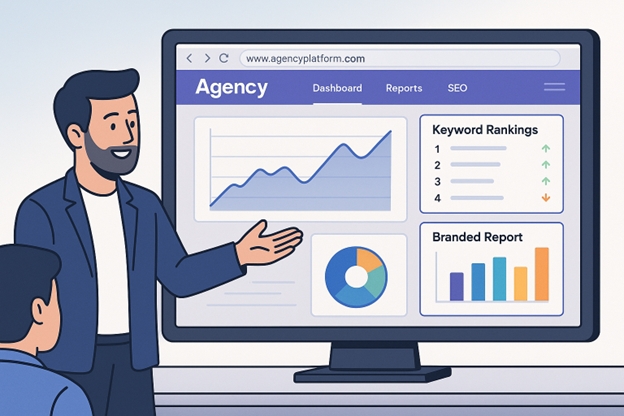
AgencyPlatform is an innovative platform built for white label scale, fostering businesses to provide fully branded interfaces with custom domains, tailored colors, embedded white label SEO solutions, and unlimited logins. It leverages AI-driven insights dashboard and single click monitoring to enable automation that creates versatile, customer ready proposals effortlessly. Essentially, the platform is interconnected with Google Analytics, Facebook Ads, Search Console, along with offering an open API for CRM integration. The platform involves a structured pricing model, like local SEO package cost ranging from $178 per month and platform membership starting from $11 per month, while offering robust margins for resellers. Every agency is supported by a dedicated account manager and stealth-mode strategists, making it a compelling option for agencies that want scalability without hidden costs.
SEOReseller.com: a command center with built-in CRM
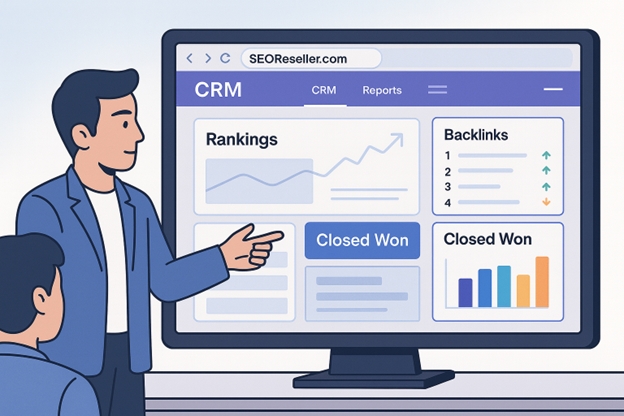
Combines a white-label dashboard with a built-in CRM, creating a unified hub for rankings, backlinks, and traffic reports. The native CRM streamlines client management by tracking prospects through audits to fulfillment, and it even includes marketing automation and landing-page builders. Agencies can order fulfillment services à la carte, from link outreach to content, while clients can view step-by-step progress updates. Pricing begins at $499 per month for local SEO, and its Starter subscription (free for 14 days, then $39 per month) unlocks a dashboard for up to 10 campaigns. With project managers and live-chat access to specialists, SEOReseller.com is a strong fit for agencies that want reporting, fulfillment, and CRM under one roof.
The HOTH: on-demand marketplace built for scale
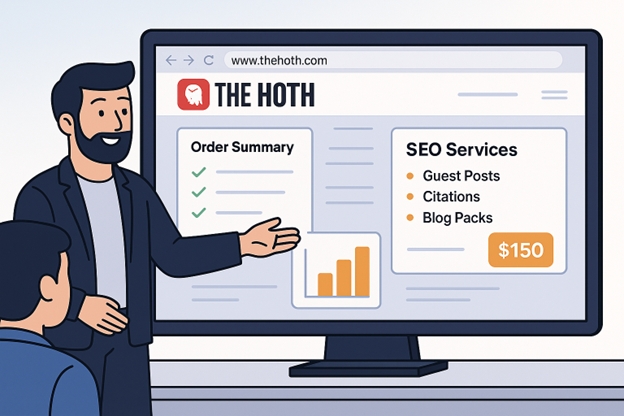
Takes a marketplace-style approach, working like an SEO “vending machine” where agencies can order services like guest posts, citations, or blog packs with clear, per-order pricing. Orders typically enter production within 24 hours, with a 14-day average turnaround, making it ideal for agencies needing fast, elastic fulfillment. Pricing is transparent—guest posts start at $150, press-release syndication costs $149, and bulk HOTH Credits create discounts of up to 15 percent. Despite its cost-effective nature, it lacks a real-time rank monitoring dashboard. HOTH has gained significant traction in offering delivery proof with white-label PDFs and for seasoned professionals dedicated for large-scale enterprises. It’s best for those who prioritize scalability and speed over full-service dashboards.
DashClicks: an all-in-one stack for agencies that bundle services
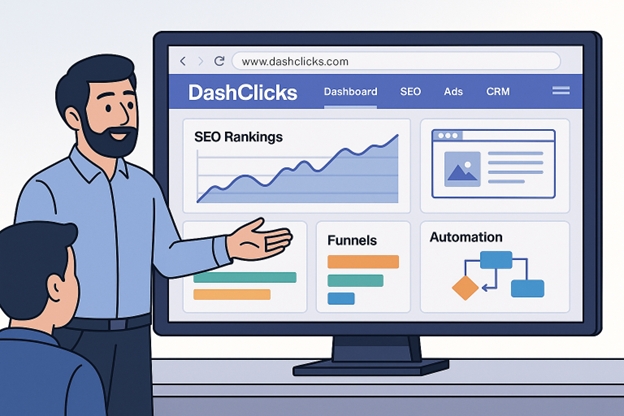
Offers a modular, all-in-one white-label platform that functions like an Ikea-style stack for agencies. Its unified cockpit pulls together SEO rankings, ad spend, CRM pipelines, and client communication into a single view. A standout feature, InstaSites, lets agencies spin up templated websites in under 30 seconds, while automation connects tasks to drip emails, Slack notifications, and QuickBooks invoices. The fulfillment marketplace provides SEO and content services that integrate seamlessly with the sales side. The subscription model starts at $99/month for pro users that contains unlimited funnels and real-time reporting of approx. 40 projects. Moreover, DashClicks recently launched its new loyalty program that provides 10 to 15% discounts, making it an engaging solution for businesses bundling a diverse range of services. Though, this has become less effective for startups and businesses operating on single channel.
Boostability: Enterprise Grade SEO for Small Local Businesses
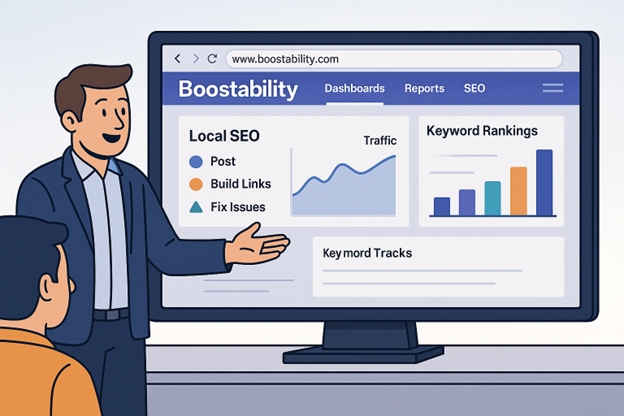
Boostability is a local SEO platform designed for high-volume SEO for SEM businesses, offering over 30,000 campaigns per month across nine languages. It involves a suite of cost-effective plans, including Starter, Grow, and Premium which involves specific fixed monthly tasks. Irrespective of whether it’s blog posts, technical troubleshooting, link building, and performance monitoring via reports and dashboard. This competitive pricing structure starts from $299/monthly for local SEO with growing capabilities for national campaigns where collaborators can earn up to 50% of total revenue. Businesses leverage competitor decks, whisper-mode pitch assistance, and role-play support to get benefits from robust sales support. Its capability to adapt ever-changing Google updates and manage a wide range of campaigns together makes it an ideal solution for businesses of all sizes that seek dependable, scalable SEO solutions that deliver high-quality, consistent results.
How to choose and next steps
A feature checklist is helpful, but fit is everything. Use a simple 10-point scorecard—one to five points for each of the six essentials (branding, reporting, automation, usability, scalability, support)—then weigh the totals by what matters most to your agency.
- Score the shortlist. A boutique shop courting thought-leadership clients might double-weight automation and reporting. A local-business specialist might give extra points to low-cost fulfilment.
- Book demos with proof. Ask the rep to white-label the dashboard live and switch roles so you can test the client view. Request a five-minute screen-share of their support workflow to see how fast specialists join.
- Run a pilot. Onboard one current client and one new prospect. Stress-test bulk audits, trigger a fake crisis ticket, and have a non-SEO teammate pull a report. You’re measuring resilience, not perfection.
- Quantify time saved. Zapier’s 2024 ROI benchmark shows that automating reporting alone saves agencies nine-plus hours per month on average. Multiply that by your billable rate to decide if the platform pays for itself.
- Decide—and schedule a review. Lock in the winner for 90 days, then revisit your scorecard. If the platform hasn’t freed at least one workday a month, renegotiate or move on.
Choose the partner that returns your most precious asset—time. When you reclaim even half a day each week, strategy gets sharper, upsells flow easier, and growth stops feeling like firefighting.

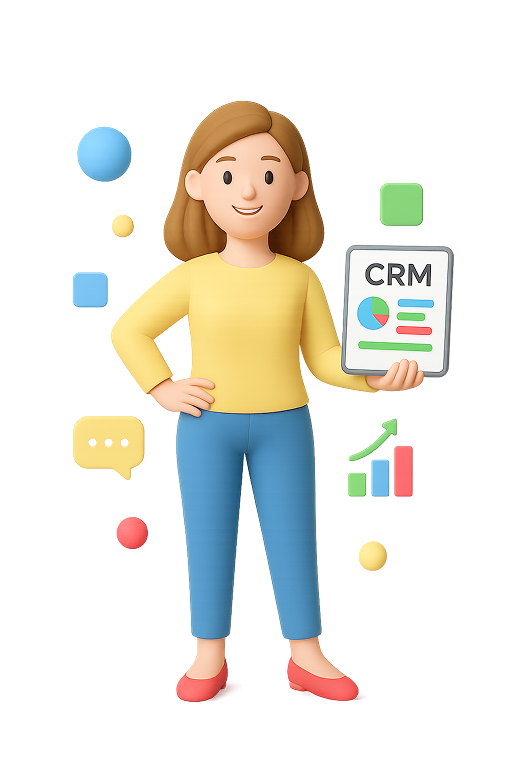

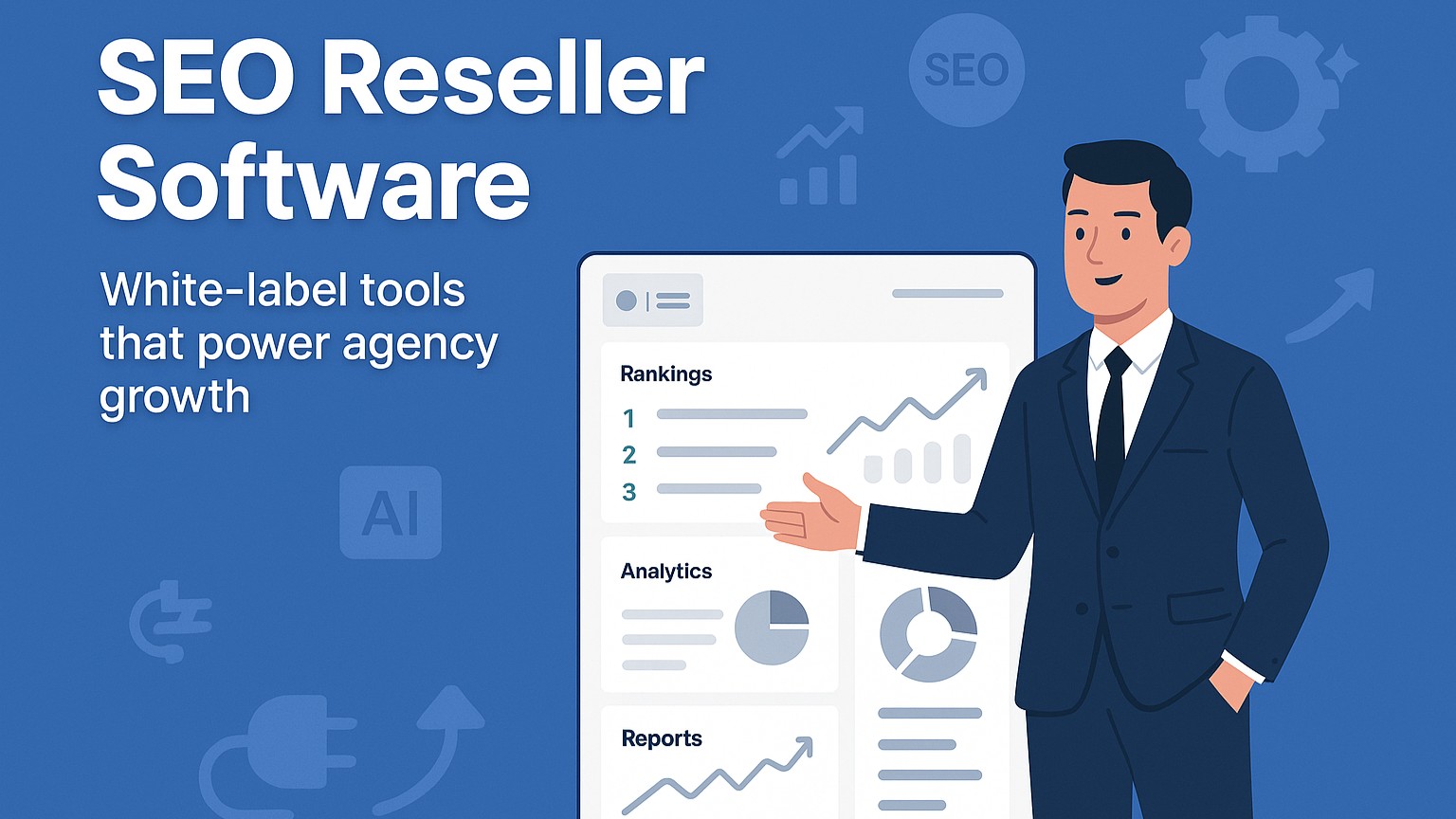
%201.png)

%201.png)

%201.png)

